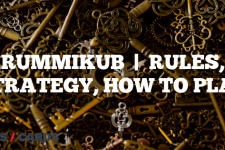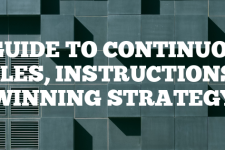Patchwork Board Game – Quick-Start Guide to Strategy, Tips, Rules & Instructions
Introduction
Patchwork is a two-player game where you compete to build the most aesthetic (and high-scoring) quilt on a personal 9×9 game board. Designed by Uwe Rosenberg, it’s a game that has elements of strategy, efficiency, and a bit of luck. The game was first released in 2014 and has since become a favorite among board game enthusiasts for its simple yet deep gameplay. I find it has a lot of replayability even with the simple concept.

As a player, you use ‘buttons’—the currency of the game—to purchase different shaped fabric pieces, which you then place on your board. The goal is to fill up as much of your board as possible while also collecting buttons for additional points. The game ends when both players have passed the center of the time board, and the winner is the player with the most points, which are a combination of buttons and filled spaces on their board.
Quick Tip for Patchwork
Always keep an eye on your opponent’s board and button supply. If you can predict their moves, you can plan yours better to stay ahead!
Rules for playing Patchwork
Understanding the rules of Patchwork is key to enjoying the game. Each player starts with five buttons and a 9×9 board. The game board is surrounded by a variety of patch pieces laid out in a circle. A neutral token marks the starting piece. On your turn, you can either advance your time token to the space just after the other player’s token on the time board and receive one button per space moved, or purchase and place a patch on your quilt board.
Patches cost a combination of buttons and time. When you buy a patch, you pay the cost in buttons, then move your time token on the time board the number of spaces shown on the patch. Some patches also provide a button income, which gives you buttons when the time token crosses certain points on the time board.
The time board also has single square patches you can collect if you land on or pass special spaces. Additionally, the first player to completely fill a 7×7 area on their board receives a special patch worth bonus points. The game ends when both players reach the center of the time board, and points are calculated based on the number of buttons you have and the empty spaces on your board. Each empty square on your board is worth -2 points.
Equipment and Setup for Patchwork
To play Patchwork, you need the game board, time board, two 9×9 quilt boards, buttons (the currency), and a variety of patch pieces. Each patch piece is a different shape and has a cost in buttons and time associated with it. You can buy the game, or if you’re crafty, you could even try making your own version with some cardboard and fabric scraps for the patches.
Setup is simple: lay out the time board and place the patch pieces in a circle around it. Each patch should be randomly placed in the circle, but in a specific order from the start token. Give each player a quilt board and five buttons as their starting currency. Place the time tokens on the starting space of the time board, and you’re ready to go!
How to Play Patchwork and Game Mechanics
The game mechanics of Patchwork are straightforward but offer deep strategic play. Here’s how a typical game flows:
- Choose a Patch: On your turn, you can select any of the three patches ahead of the neutral token in the circle. Pay the cost in buttons and time, then add it to your quilt board.
- Advance Time Token: If you can’t or don’t want to buy a patch, move your time token to the space just after the other player’s token and collect buttons for each space moved.
- Income and Special Patches: As you move your time token, you may cross button symbols that allow you to collect buttons from the bank, or you might land on spaces that give you small one-square patches to fill gaps in your quilt.
- Game End: The game ends when both players’ time tokens reach the center of the time board. Calculate your score by adding up your buttons and subtracting two points for each empty square on your quilt board.
How to Win at Patchwork
Winning at Patchwork requires a balance of strategy and adaptability. Beginners should focus on learning how to efficiently fill their board and manage their button income. As you get more comfortable with the game, start paying attention to your opponent’s board and button supply. Intermediate players should work on anticipating their opponent’s moves and blocking them from getting patches they need. Advanced players will be able to plan several moves ahead, optimizing both their board and their button income.
Best Strategies for playing Patchwork game
To really excel at Patchwork, you need to master a few key strategies. First, prioritize patches that give you a good balance of coverage on your board and button income. Don’t just go for the big pieces; sometimes the smaller ones can be more valuable in the long run. Second, keep an eye on the time board. Moving too quickly can leave you with fewer options, while moving too slowly can give your opponent too much control. Lastly, always be aware of the 7×7 bonus patch. Securing this can often be the difference between winning and losing.
Firstly, it is crucial to select patches that fit well together, minimizing gaps and completing rows and columns to earn buttons, the game’s currency. Players should aim for pieces that offer a balance between the number of buttons (for income) and the number of squares they cover (for coverage). Secondly, managing your time token on the central board is essential; taking smaller patches can grant more turns, but larger patches, though fewer in number, might fill up your board more efficiently. Thirdly, collecting single square patches can be a strategic move, as they can fill in small gaps that inevitably show up as the game progresses. Fourthly, keeping an eye on your opponent’s board and the pieces they might need can allow you to strategically take pieces that they require or force them into suboptimal moves.
Lastly, it’s important to plan for the endgame by securing patches that complete your quilt, as empty spaces result in lost points. By balancing these strategies, players can optimize their patch selections, button economy, and time spent, aiming to create the most complete and valuable quilt by the end of the game.
Scenarios
During the game, you might find yourself in a tight spot or with a big advantage. If you’re behind, focus on small patches to fill gaps and try to jump ahead on the time board to collect more buttons. If you’re ahead, block your opponent from getting patches they need and control the pace of the game.
Frequently Asked Questions about playing Patchwork
Q: Can I move my time token backwards?
A: No, the time token can only move forwards on the time board.
Q: What happens if I can’t afford any patches?
A: You must then move your time token forward to the space just after the other player’s token and collect buttons for each space moved.
Q: Can patches overlap on my board?
A: No, patches must be placed next to each other without overlapping.
Q: What if both players reach the center of the time board at the same time?
A: The game ends and you calculate scores as usual. The player with the most points wins.
Q: Can I save buttons for later turns?
A: Yes, unspent buttons remain with you for future turns.
External Links
For more information on Patchwork, check out the official rulebook and other resources:

A digital native around since the early days of online gaming communities around 2001. An early contributor to the cult gaming site ClanTemplates, Adam has spent years giving free gaming resources to the community. With BoardCards, Adam is most experienced and commonly writing the articles on Strategy multi-player games like Settlers of Catan and Avalon. His first introduction to board games was via Mancala, an Egyptian-origin stone game and one of the oldest known games still played worldwide. Contact me via email



